18 Animals Beginning with the Letter W
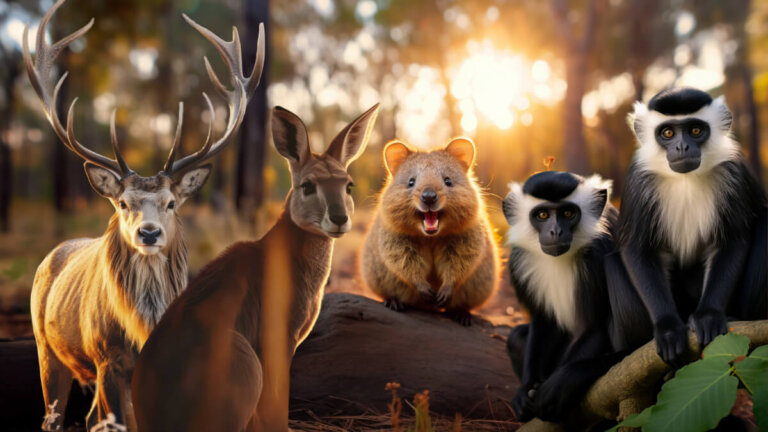
How many animals that start with the letter W can you name? If you’ve drawn a blank, no problem. Just keep reading! You might be surprised to discover the species we’ll tell you about today.
Categorizing animals according to the letter they begin with is a great way to discover interesting species that inhabit our world. So today, we’ll explore a comprehensive list of animals that begin with the letter W from all genera and regions.
Marsupials that start with the letter W
Many of the animals that start with the letter W are various types of marsupials; that is, mammals that finish developing inside the marsupium, as the pouch in the mother’s womb is known. Generally, they’re animals that you can find in the wild in Australia. Let’s take a look at a list of all the marsupials that begin with W.
1. Wombat (family Vombatidae)
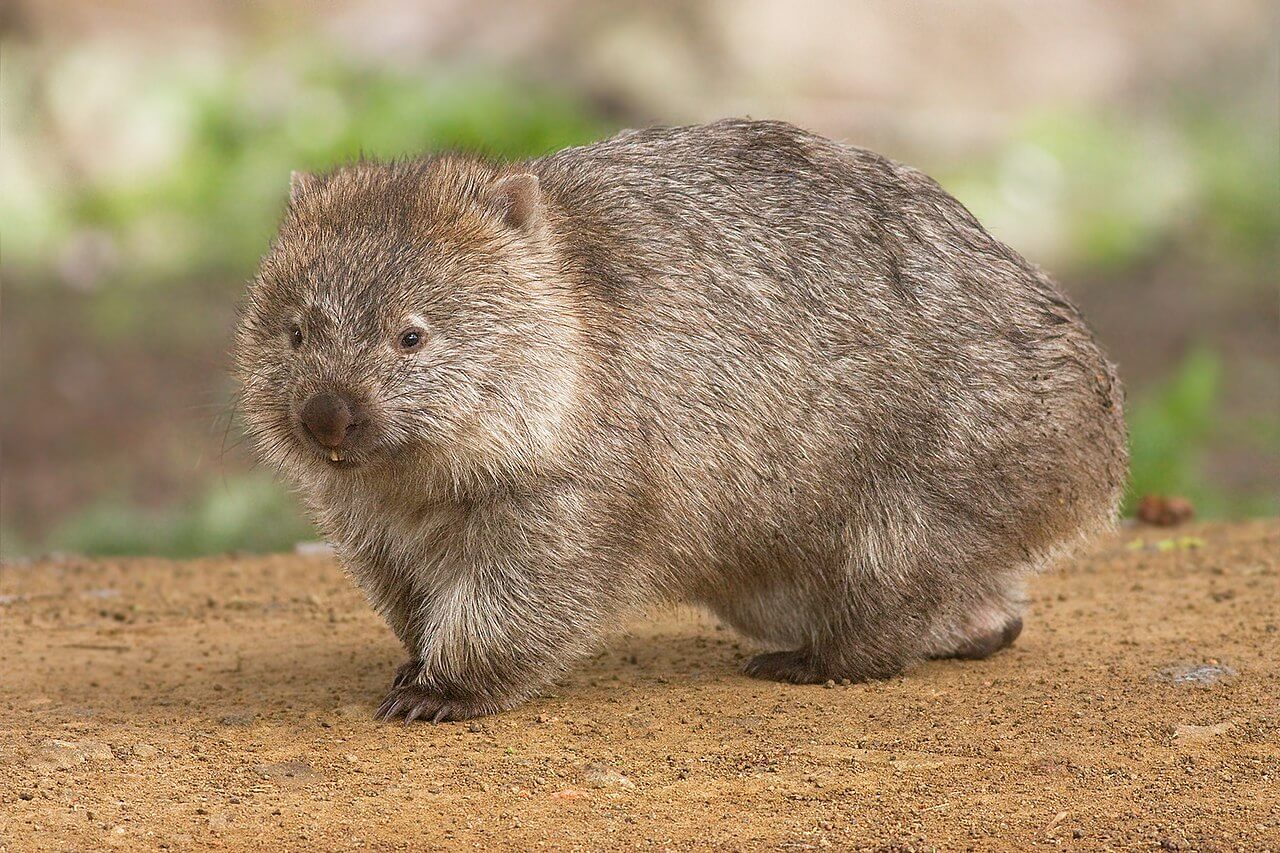
These curious little animals are small, short-legged bear-like marsupials. They live in burrows that they make with their strong claws and rodent-like incisors. They’re about three feet long, and their fur color can be black, gray, beige, or brown.
2. Wallaby (family Macropodidae, mostly)
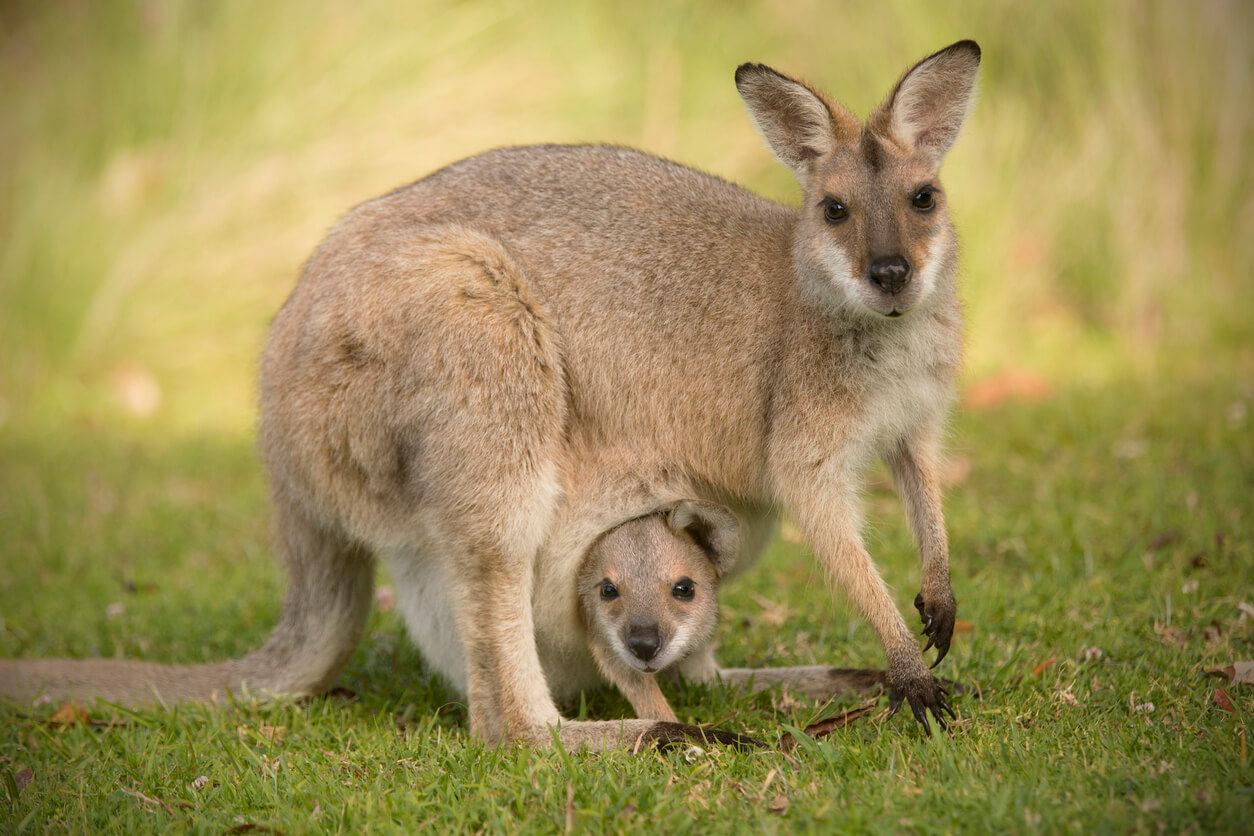
The second marsupial on our list is the wallaby. The name is used to refer to any marsupial that’s not large enough to be considered a kangaroo. Wallabies inhabit lush forests in Australia, where they feed on vegetation.
3. Swamp wallaby (Wallabia bicolor)
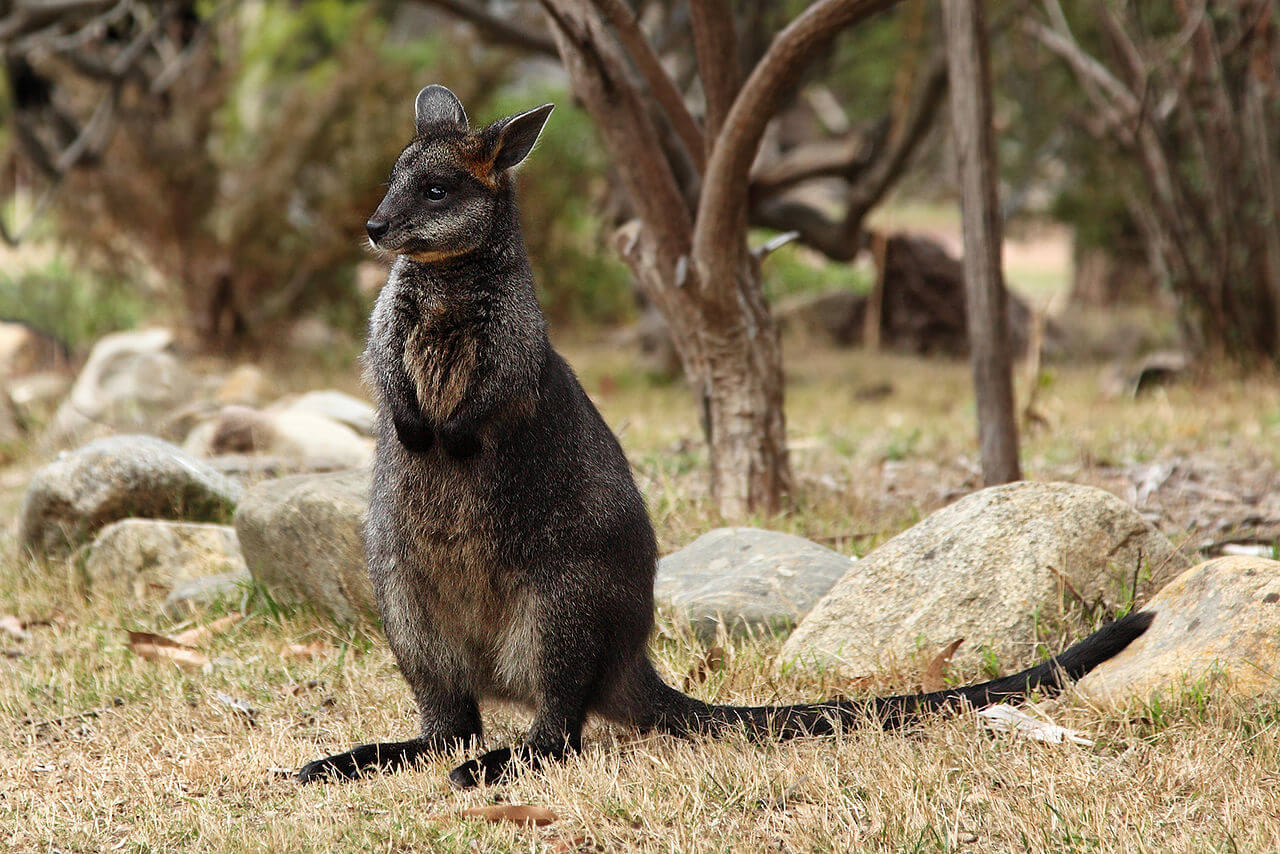
The swamp wallaby, or black wallaby, is a marsupial that lives in undergrowth. It’s quite cautious and hides among the vegetation during the day, coming out to feed when the sun goes down.
A curious aspect of this animal is that the female has two uteruses, which allows her to begin her gestation period before giving birth to her young, something that doesn’t occur with most wallabies.
It has a long and thick dark brown coat. Its extremities have a more intense tonality, to the point of being almost black.
4. Warru (Petrogale brachyotis)

This species of marsupial is known as warru. It’s also called the black-sided rock wallaby because it lives among black-sided rocks, which it uses to camouflage itself, thanks to its fur full of gray and black spots. This animal lives in very large groups (up to a hundred individuals altogether!).
5. Common wallaroo (Macropus robustus)
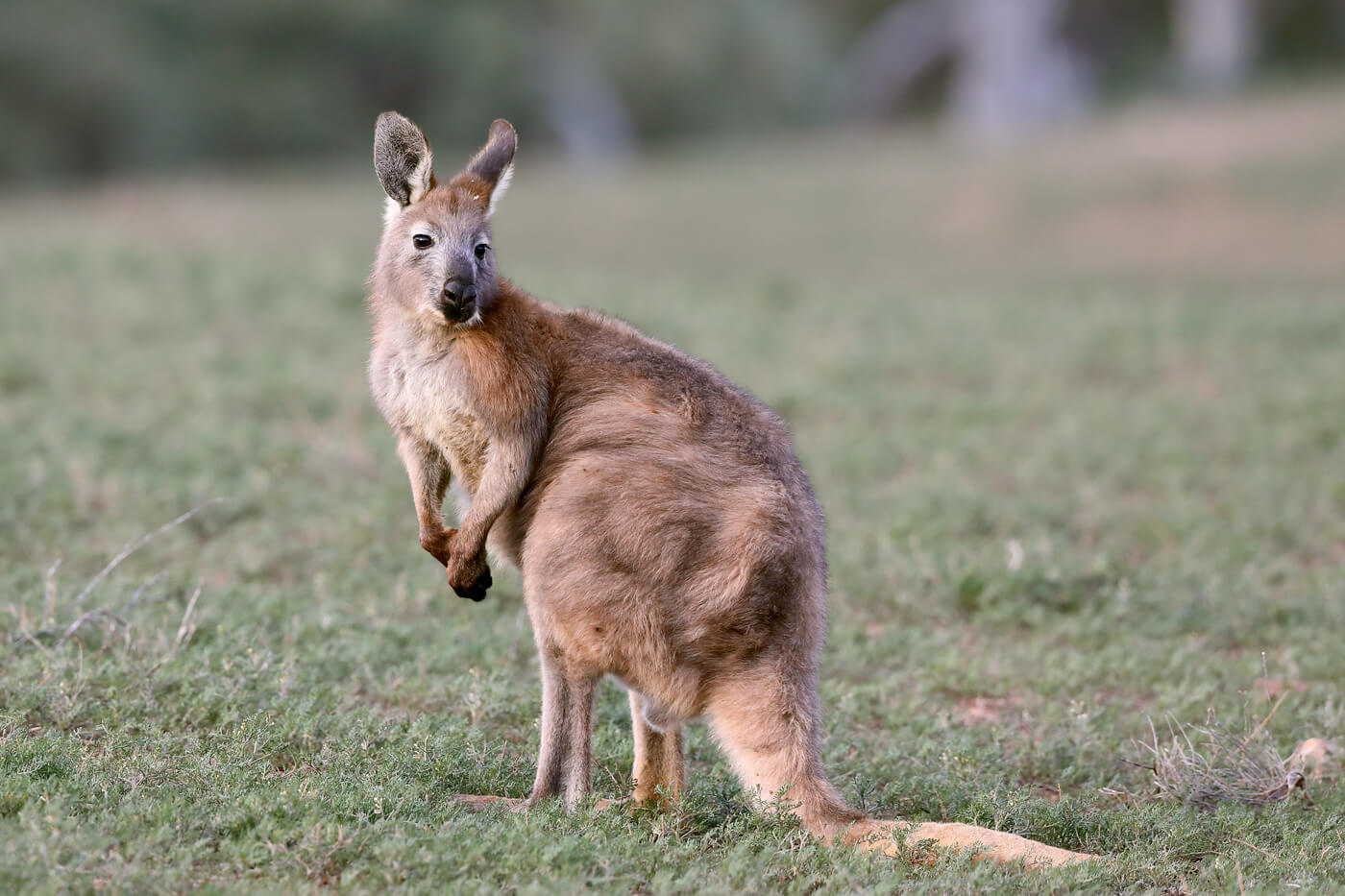
The common wallaroo, also known as the eastern wallaroo or robust wallaroo because of its massive body, is a marsupial that lives on the arid slopes of the Great Dividing Range, which is Australia’s largest mountain range.
This mammal is small, nocturnal, solitary, and very hardy: It withstands high temperatures and can last several days without drinking water. In fact, it can live up to two weeks without fluid intake, thanks to the fact that it metabolizes water from the plants it eats (soft-textured grasses and shrubs).
6. Black Wallaroo (Macropus bernardus)
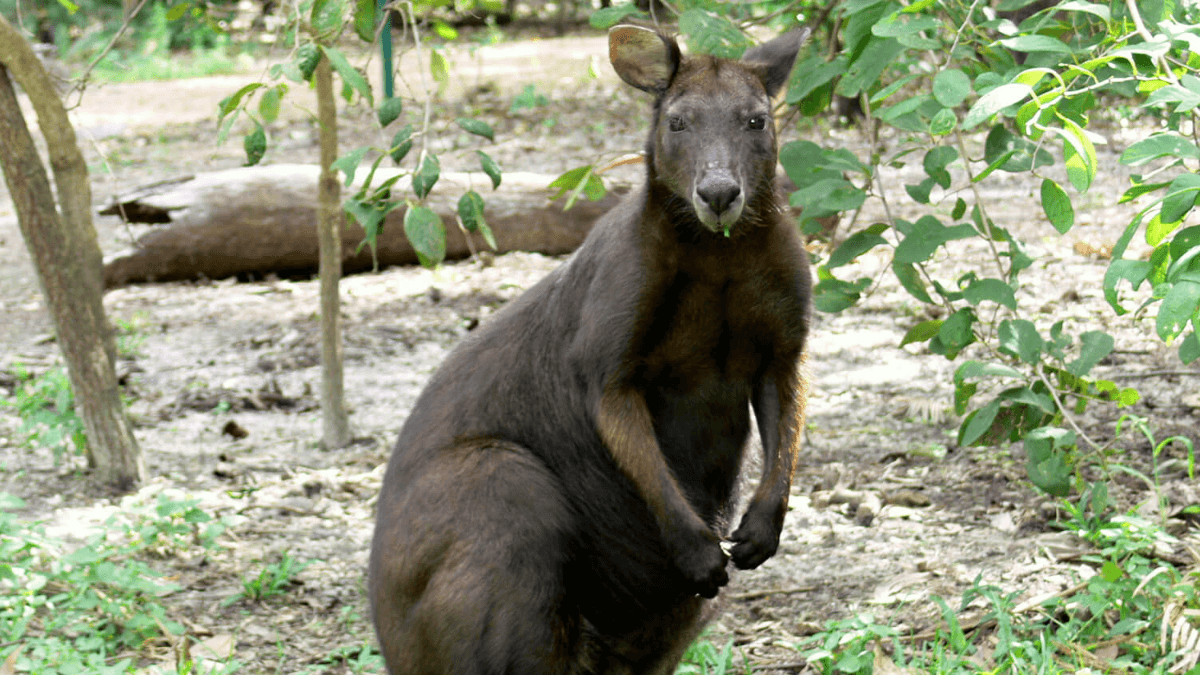
The black wallaroo is a solitary marsupial – with the exception of the mating season – and nocturnal. The Red List of Threatened Species of the International Union for Conservation of Nature (IUCN) considers it to be a “near threatened” creature. This is evidenced by its reduced distribution, which is limited to a mountainous area of Arnhem Land, Australia.
Males have black fur, and females have gray fur.
7. Antelopine wallaroo (Macropus antilopinus)
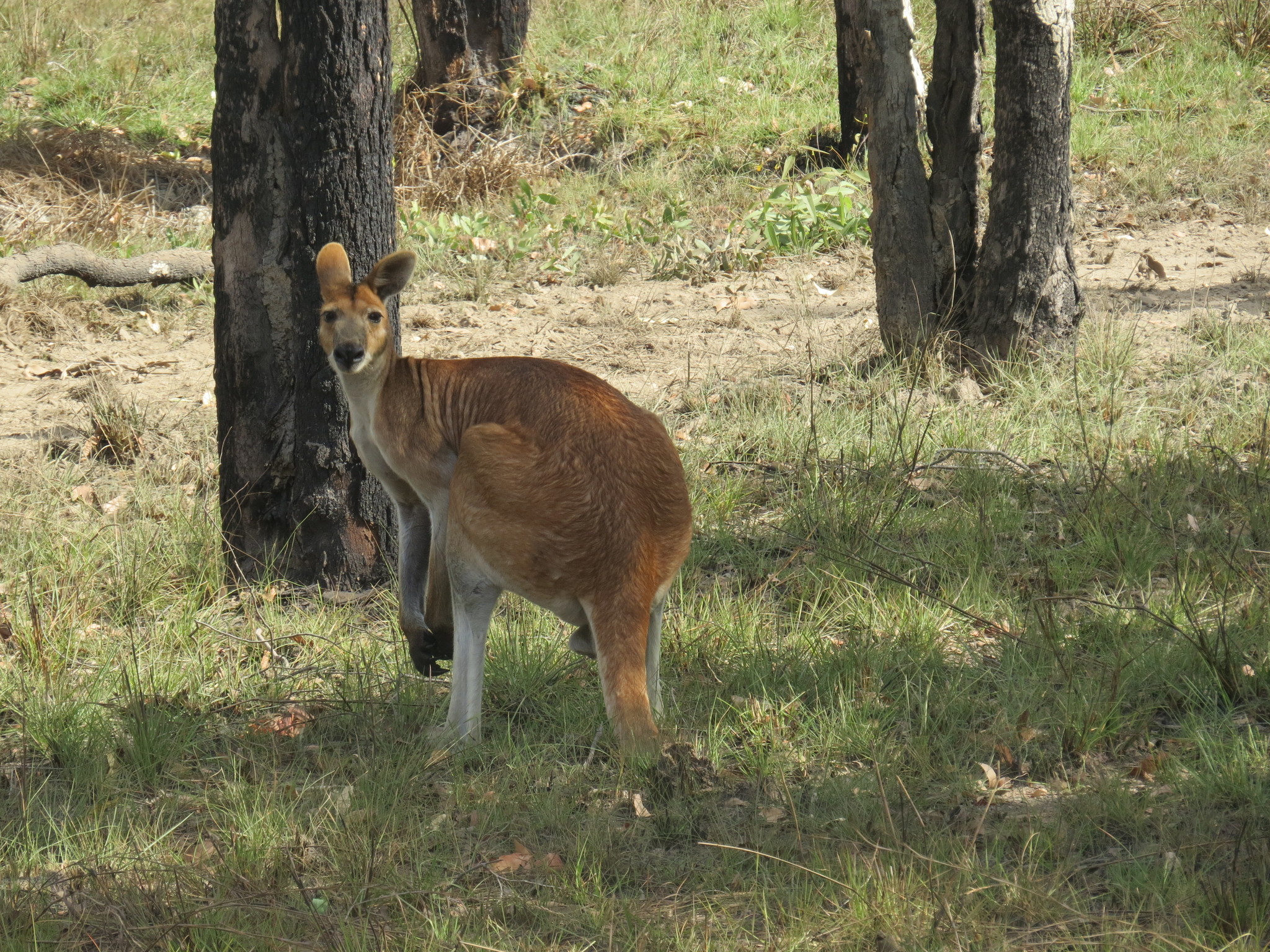
If you were under the impression the black wallaroo was nothing like the common wallaroo, then you’ll be even more surprised by the antelopine wallaroo. In fact, it’s also known as the antelopine kangaroo because it looks more like a kangaroo than a wallaroo.
This giant animal is sociable and herbivorous. It inhabits plains and spacious areas of the Australian Northern Territory. Both males and females groom each other, which is known as allogrooming or social grooming.
8. Woylie (Bettongia penicillata)
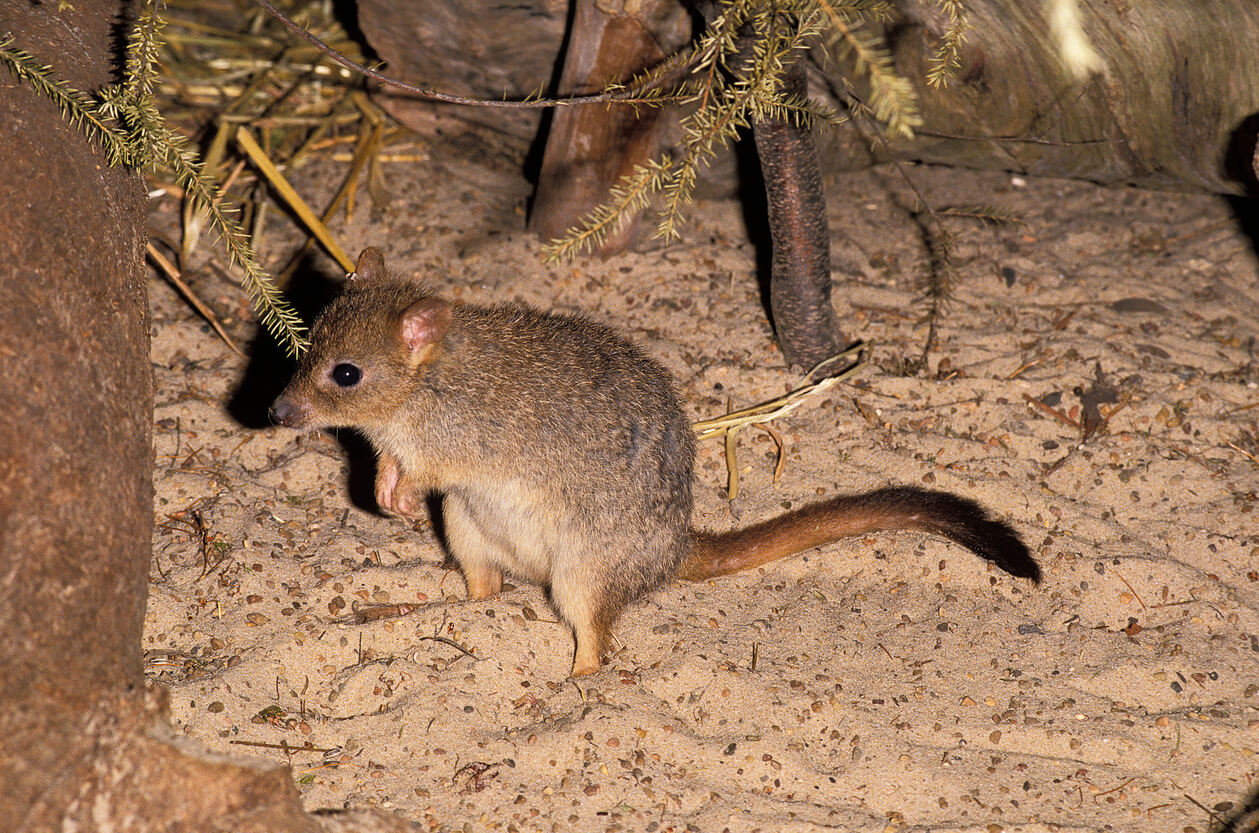
While we’re on the subject of rare animals, we can’t forget to mention the woylie. It’s a very small marsupial (similar to a gerbil) that today is considered “critically endangered” due to the loss of its habitat.
At present, it can only be found in small portions of Western Australia. Its diet consists of subterranean fungi, although it also often incorporates the following components into its diet:
- Resin
- Bulbs
- Seeds
- Insects
- Tubers
Other mammals that begin with the letter W
Although they’re the majority, marsupials aren’t the only mammals that begin with the letter W. On our list, we can mention three more: The wapiti, the watusi, and the wanderoo. Never heard of them? Keep reading!
9. Wapiti (Cervus canadensis)
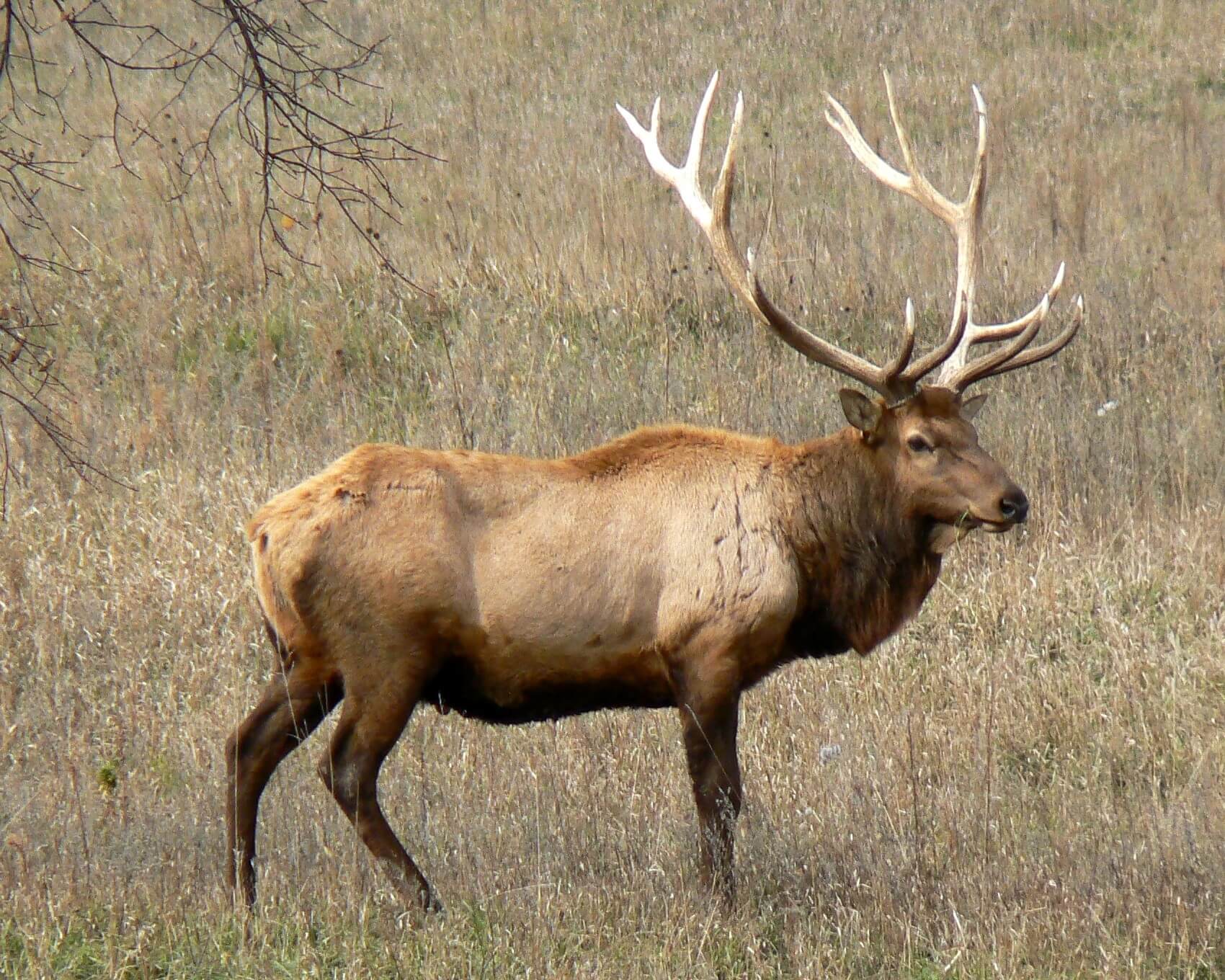
Known more commonly as the elk, the wapiti is the second largest cervid in the world, second only to the moose, and inhabits North America, mostly in Canada. Due to its large size and the strength it projects, it’s an animal of spiritual interest to the native communities of that region.
Their coat changes color according to the season: It’s darker in winter and lighter in summer.
10. Watusi (Bos taurus africanus)
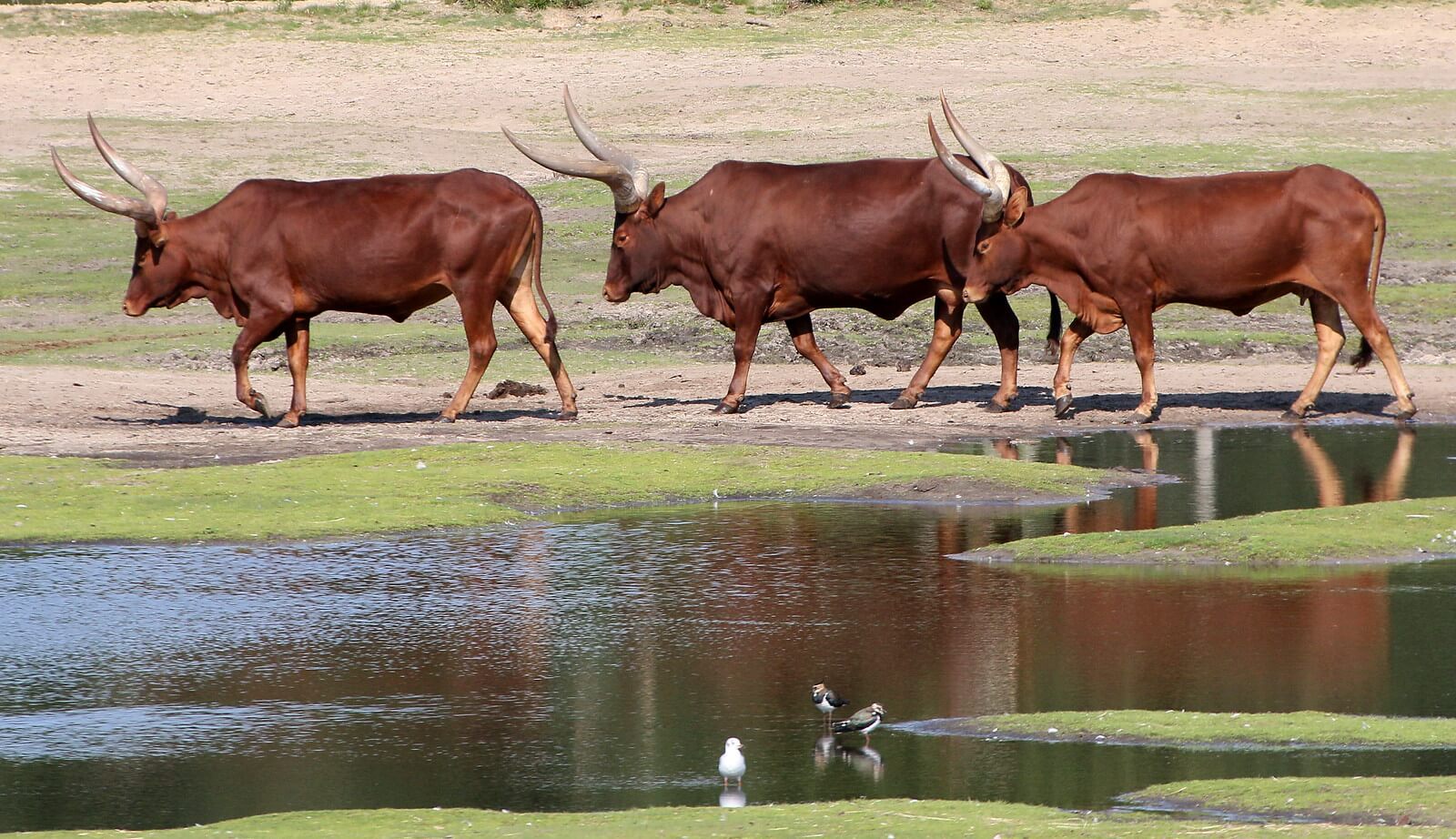
The watusi, meanwhile, is a gigantic bovine that lives in Africa. It has very large antlers; in fact, two of its specimens appear in the Guinness Book of Records for the “world’s largest antlers,” for an adult and a steer. Interesting, isn’t it?
11. Wanderoo (Macaca silenus)
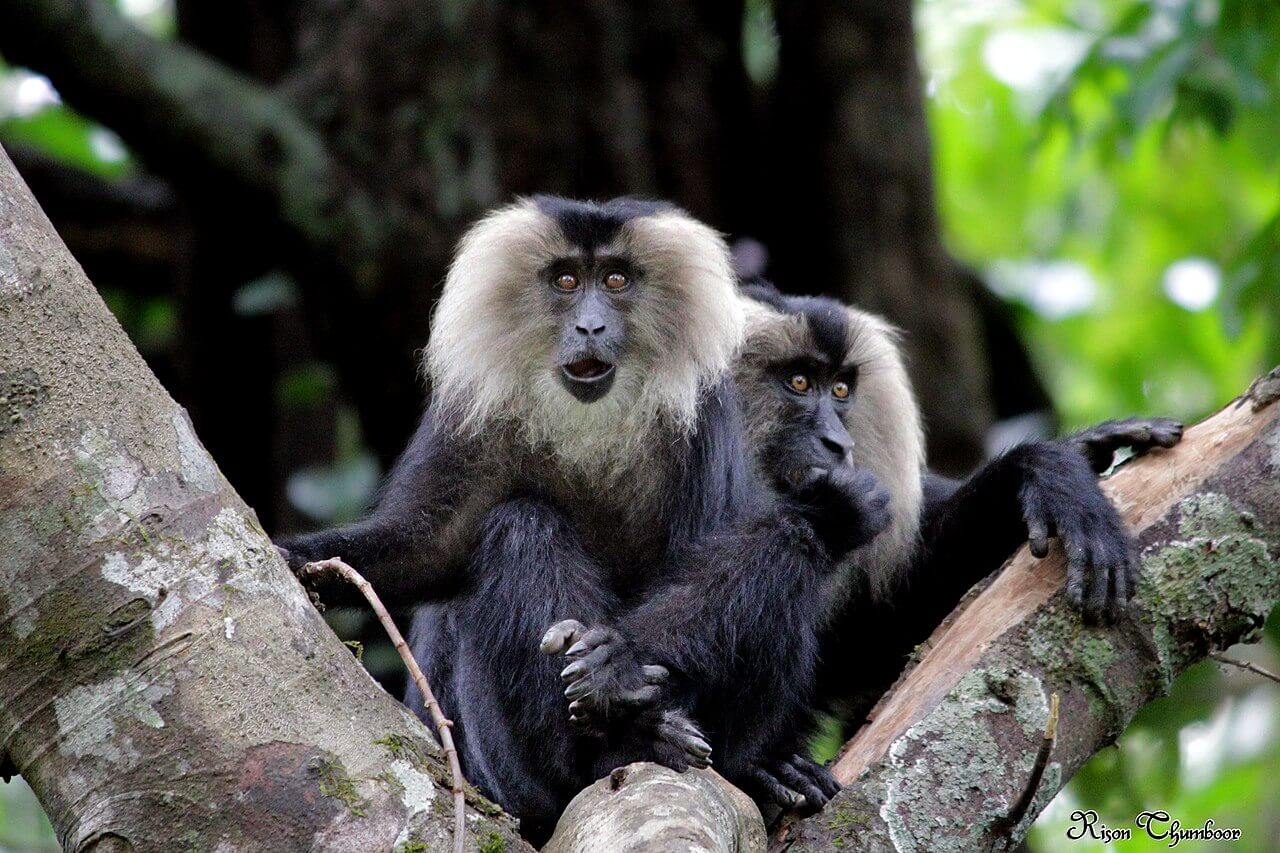
The wanderoo, also known as the lion-tailed macaque, is endemic to the mountains of the Western Ghats in India. This primate has a black coat and a gray mane that surrounds its face.
On average, the length of this species ranges from 18 to 24 inches, and the length of its tail ranges from 6.5 to 15 inches. At the same time, their weight ranges from 6.5 to 22 pounds. In this regard, females are smaller than males.
This species is considered “endangered” due to habitat degradation.
Reptiles, amphibians, and insects that begin with the letter W
Now, it’s time to mention a list of reptiles, amphibians, and insects. Although some of them live in Latin America, others in Africa and Oceania, all of them start with the letter W. Let’s take a look!
12. Weta (family Rhaphidophoridae and Anostostomatidae)

Weta is the name used to refer to a group of 70 species of New Zealand insects. They’re the largest insects in the world (they can measure up to 4 inches in length). They hide during the day in the holes of trees and come out at night to hunt and feed.
Wetas have become an object of interest in New Zealand culture thanks to their unusual appearance. The curious thing is that they’re related to species that existed during the Triassic, i.e., 180 million years ago!).
13. Wilsonosaura (Wilsonosaura josyi)
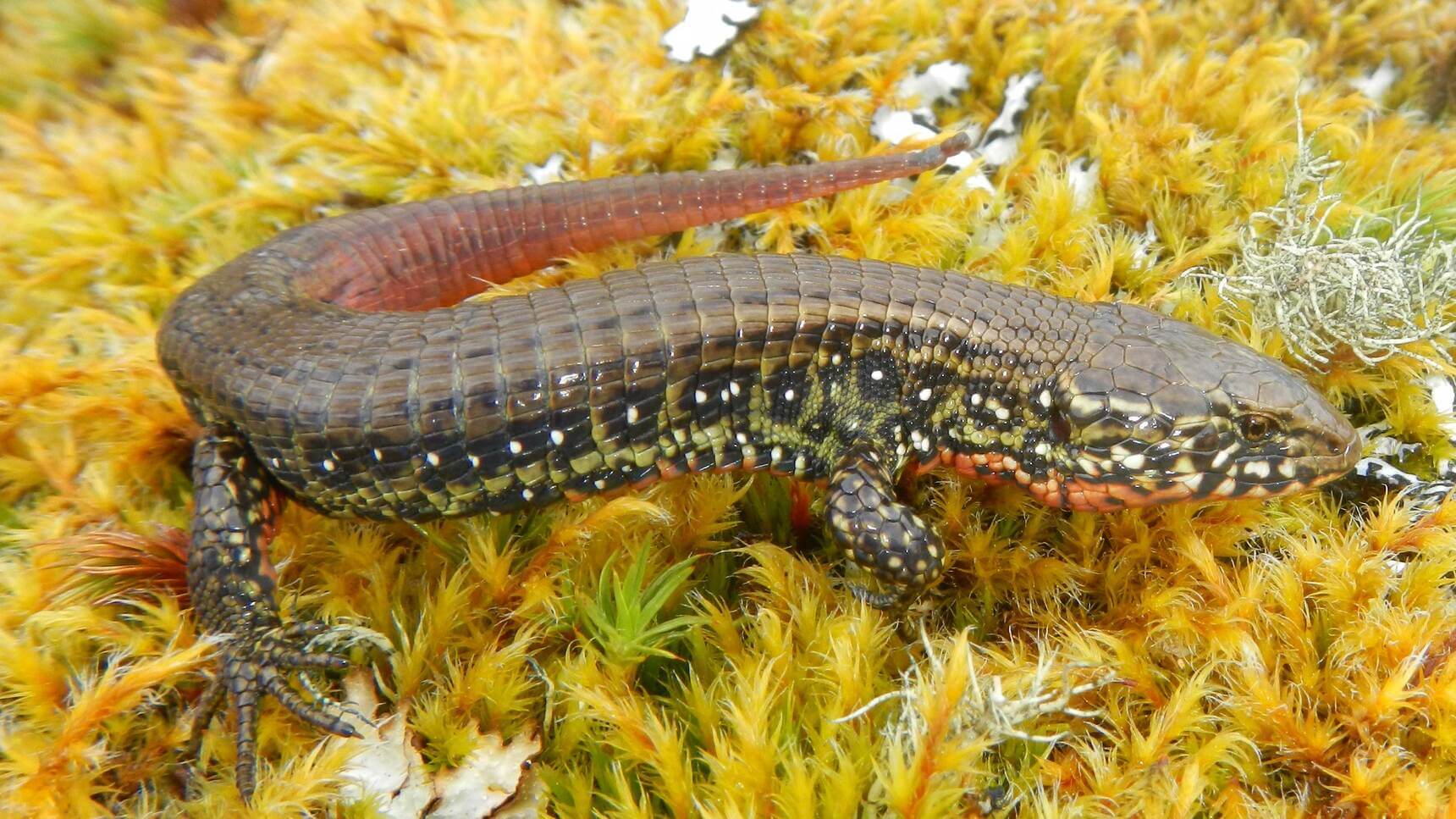
The wilsonosauraa scaly lizard inhabits Peru and was discovered only 20 years ago by German biologist Gunther Köhler, who studies animals in the Caribbean and Central America. Because its discovery is so recent, there’s still little information about this animal, although it can be recognized by the black and white spots on its sides.
14. Wishywilly (Ctenosaura oedirhina)
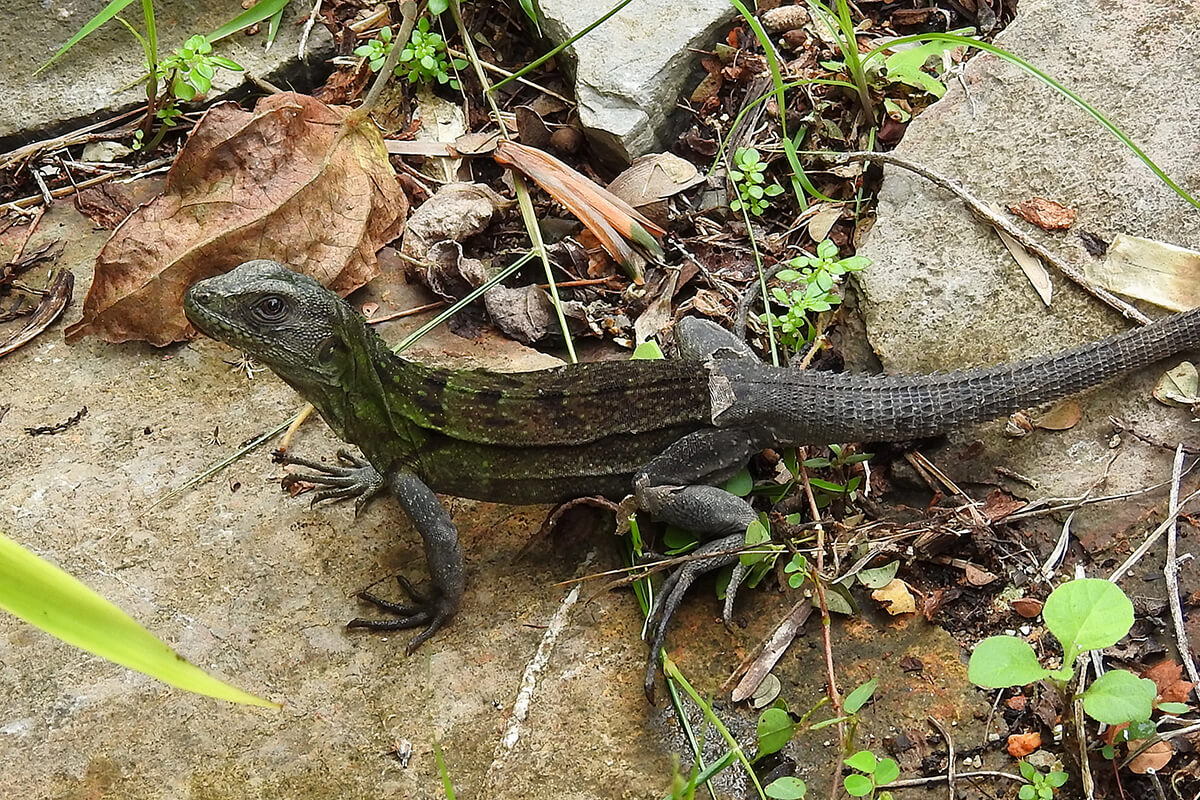
From amphibians we move on to reptiles, and now it’s the wishywilly’s turn. This is an iguana that lives in Central America, and although its natural habitat has diminished, today, you can see it in the mangroves, beaches, and some dry forests of Honduras.
Aquatic animals that begin with the letter W
Now, it’s time to explore the aquatic animals that begin with the letter W. In this case, we can mention two species of fish: the wara wara and the wallago. You’ll be surprised by the size of the latter!
15. Wara wara (Hypostomus ventromaculatus)
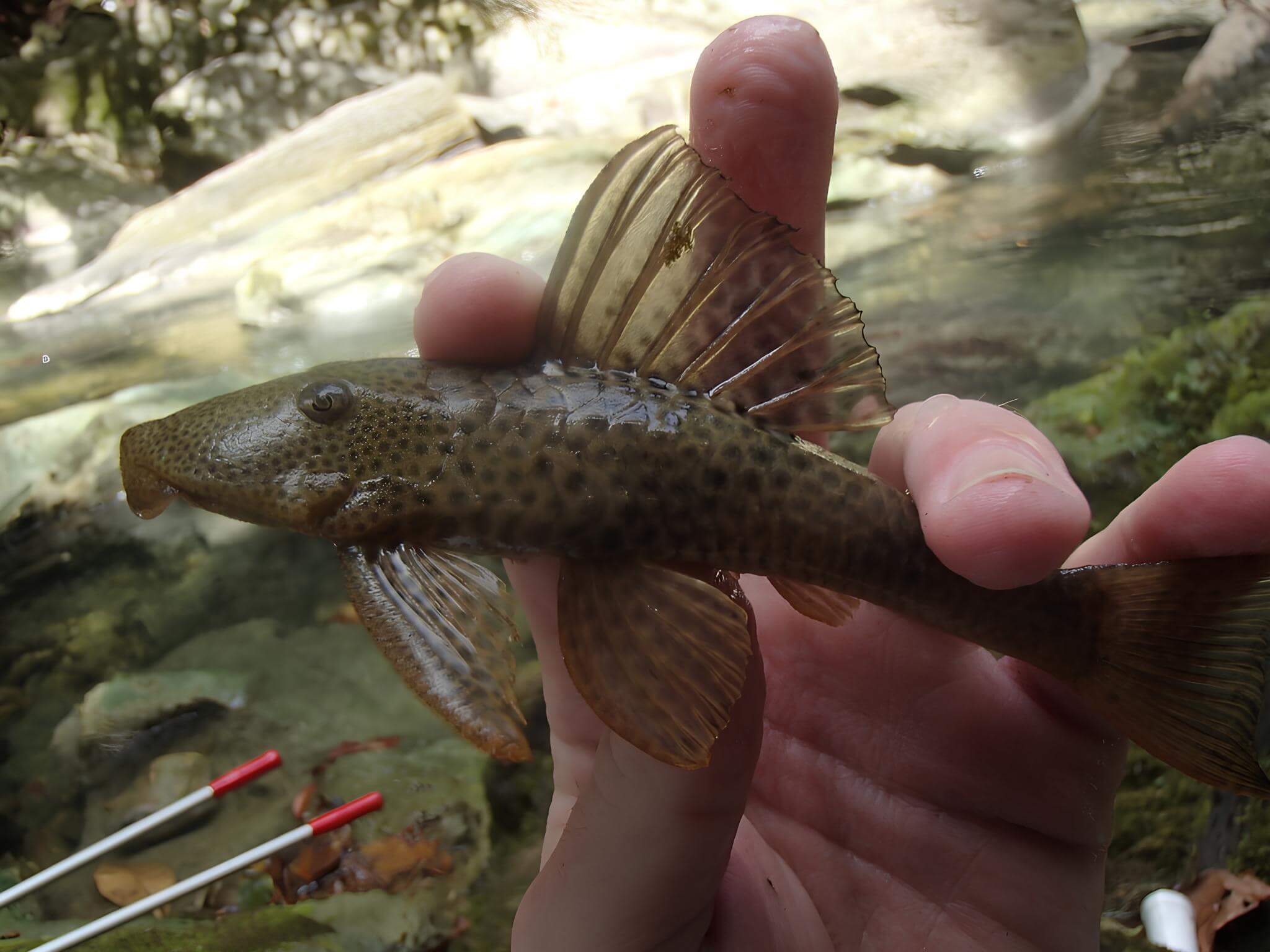
A wara wara is a river fish that lives in South America. It feeds on unicellular algae and arthropods. One interesting fact is that it can use its stomach as an accessory respiratory organ. Males of this species can measure up to 10 inches in length.
16. Wallago (family Siluridae)
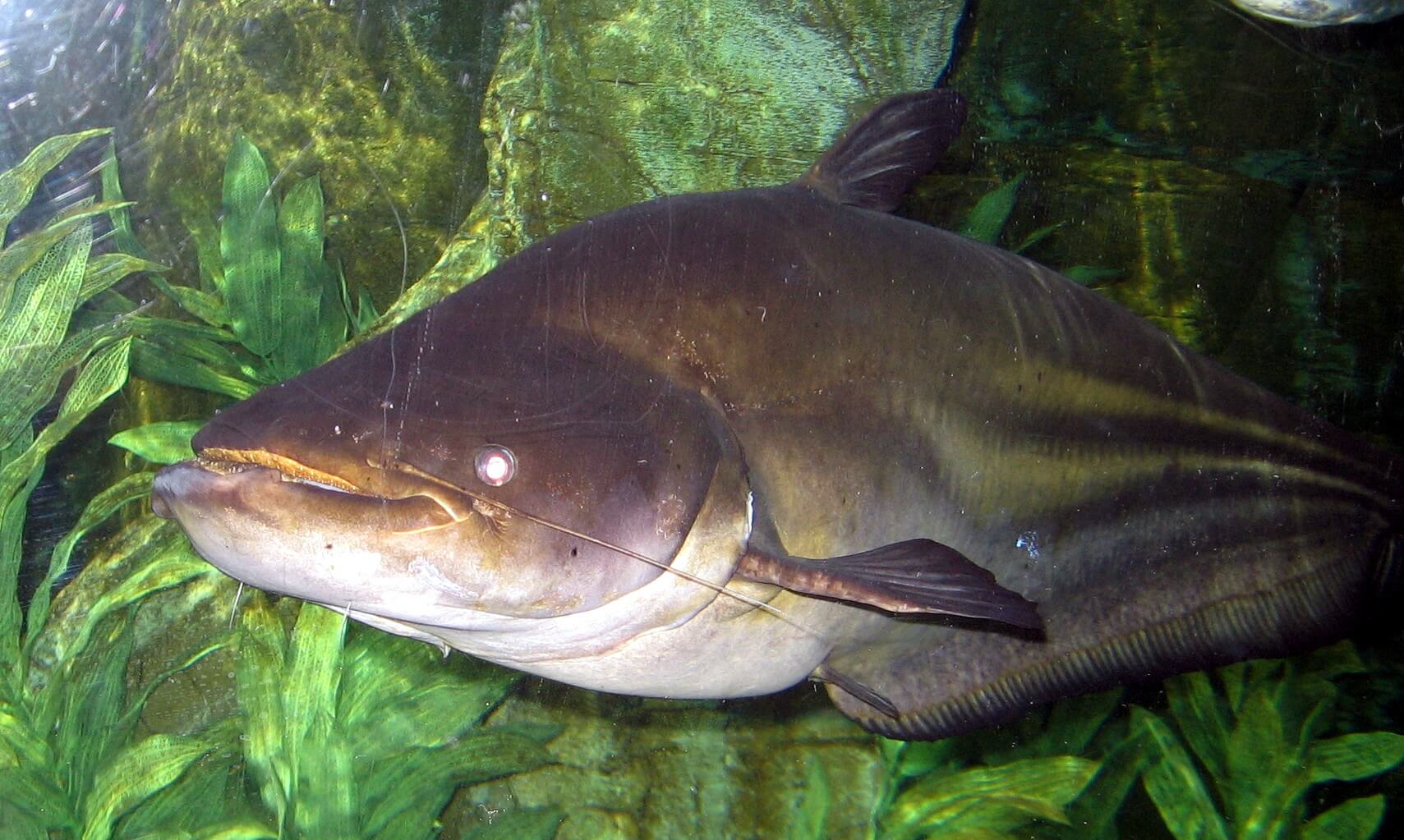
The wallago is an exceptionally large tropical freshwater fish. In fact, males can grow up to five feet long and weigh up to 190 pounds. The species Wallago attu can reach an even greater length: 7.75 feet.
Birds that start with the letter W
Flying animals are those that spend much of their lives in the air and have a significant advantage in the search for resources and the avoidance of predators. In this case, we’ll tell you about three flying animals that begin with the letter W.
17. Wira-puru (Cyphorhinus arada)
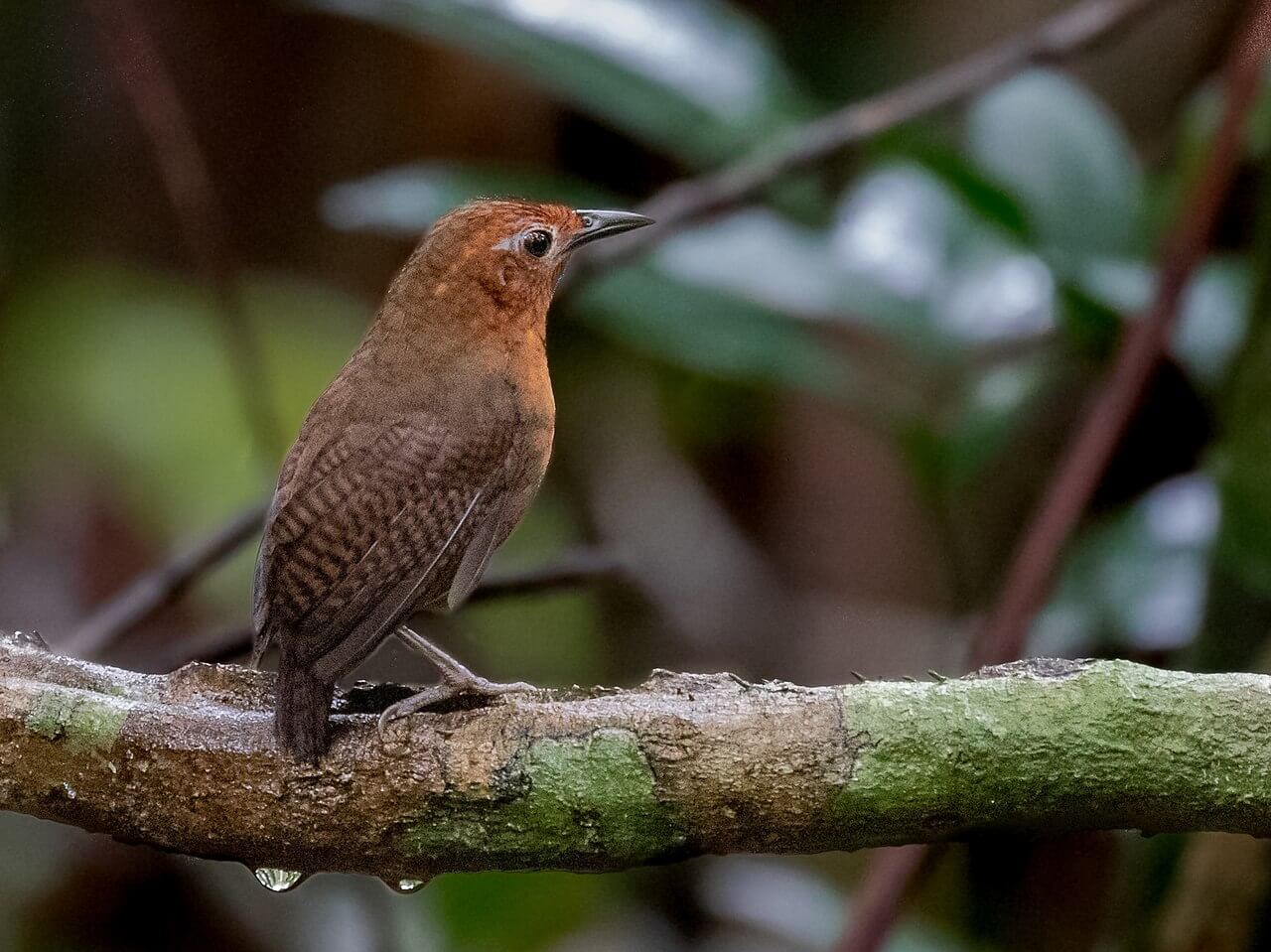
The wira-puru, also known as the musical cockatoo, is a small bird that lives deep in the Amazon rainforest of Brazil. There’s a legend behind this animal: It’s said that whoever hears its song will be blessed.
In addition, it’s said that when this animal sings, the rest of the birds remain silent to listen to it. This has to do with the fact that it’s very difficult to hear it, as it only sings 9 to 12 days a year, while building its nest, for less than ten minutes.
18. Weka (Gallirallus australis)
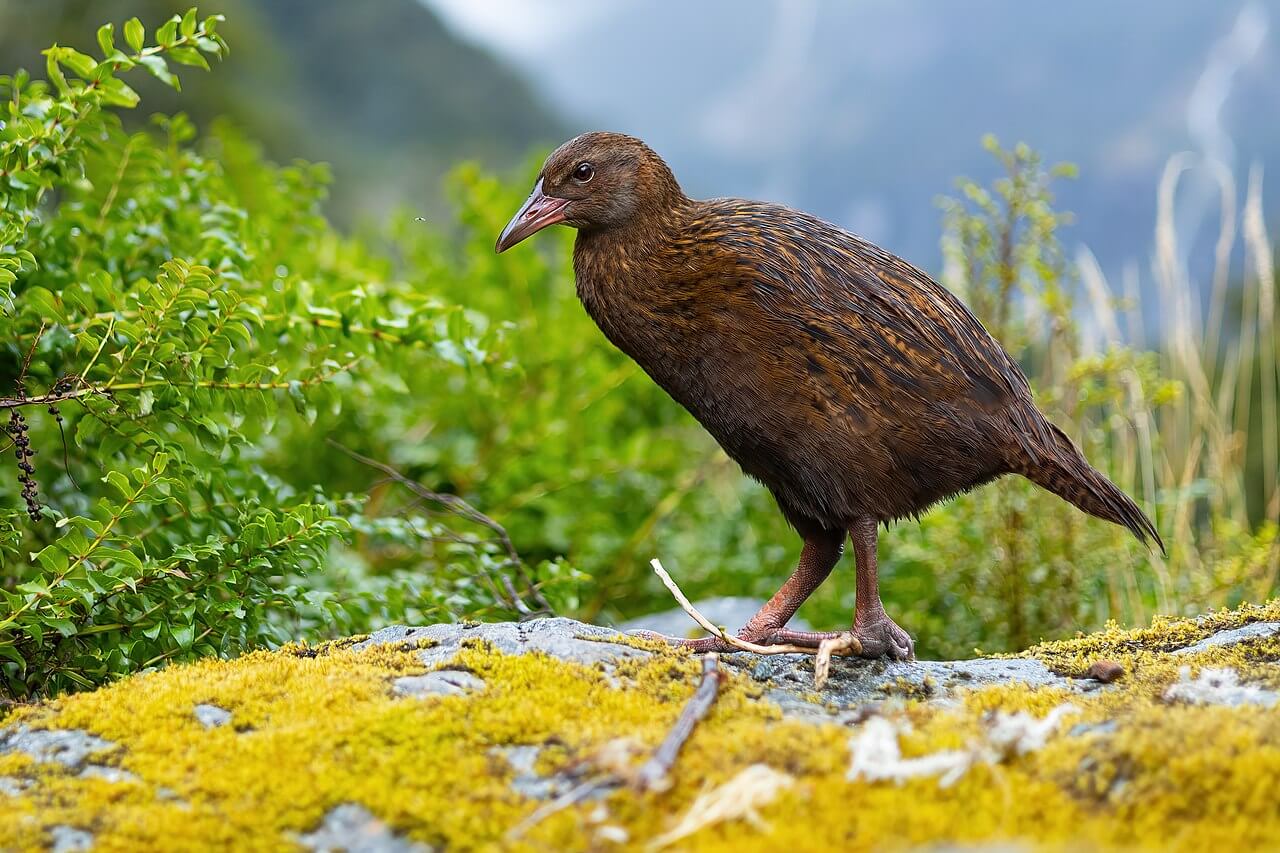
The weka is a flightless bird native to New Zealand. Its habitats are forests, grasslands, and wetlands, where it feeds on invertebrates, fruits, and some vertebrates.
Physical characteristics include brown plumage, although there are slight variations between subspecies. The size of the weka ranges from 18 to 24 inches, with the female being slightly smaller than the male.
The main threats to the Gallirallus australis are habitat degradation, predators, and unfavorable climatic conditions such as droughts and floods.
Did you know about these fascinating animals that begin with the letter W?
With good reason, we might be tempted to think that the number of animals that begin with the letter W isn’t very high. After all, it’s not a letter we use a lot in our language.
However, against all odds, there’s a large number of creatures that begin with the letter W, ranging from marsupials in Australia to birds like the wira-piru, not to mention wetas, the world’s largest insects, and bovines with giant horns. As you can see, nature always surprises us!
How many animals that start with the letter W can you name? If you’ve drawn a blank, no problem. Just keep reading! You might be surprised to discover the species we’ll tell you about today.
Categorizing animals according to the letter they begin with is a great way to discover interesting species that inhabit our world. So today, we’ll explore a comprehensive list of animals that begin with the letter W from all genera and regions.
Marsupials that start with the letter W
Many of the animals that start with the letter W are various types of marsupials; that is, mammals that finish developing inside the marsupium, as the pouch in the mother’s womb is known. Generally, they’re animals that you can find in the wild in Australia. Let’s take a look at a list of all the marsupials that begin with W.
1. Wombat (family Vombatidae)

These curious little animals are small, short-legged bear-like marsupials. They live in burrows that they make with their strong claws and rodent-like incisors. They’re about three feet long, and their fur color can be black, gray, beige, or brown.
2. Wallaby (family Macropodidae, mostly)

The second marsupial on our list is the wallaby. The name is used to refer to any marsupial that’s not large enough to be considered a kangaroo. Wallabies inhabit lush forests in Australia, where they feed on vegetation.
3. Swamp wallaby (Wallabia bicolor)

The swamp wallaby, or black wallaby, is a marsupial that lives in undergrowth. It’s quite cautious and hides among the vegetation during the day, coming out to feed when the sun goes down.
A curious aspect of this animal is that the female has two uteruses, which allows her to begin her gestation period before giving birth to her young, something that doesn’t occur with most wallabies.
It has a long and thick dark brown coat. Its extremities have a more intense tonality, to the point of being almost black.
4. Warru (Petrogale brachyotis)

This species of marsupial is known as warru. It’s also called the black-sided rock wallaby because it lives among black-sided rocks, which it uses to camouflage itself, thanks to its fur full of gray and black spots. This animal lives in very large groups (up to a hundred individuals altogether!).
5. Common wallaroo (Macropus robustus)

The common wallaroo, also known as the eastern wallaroo or robust wallaroo because of its massive body, is a marsupial that lives on the arid slopes of the Great Dividing Range, which is Australia’s largest mountain range.
This mammal is small, nocturnal, solitary, and very hardy: It withstands high temperatures and can last several days without drinking water. In fact, it can live up to two weeks without fluid intake, thanks to the fact that it metabolizes water from the plants it eats (soft-textured grasses and shrubs).
6. Black Wallaroo (Macropus bernardus)

The black wallaroo is a solitary marsupial – with the exception of the mating season – and nocturnal. The Red List of Threatened Species of the International Union for Conservation of Nature (IUCN) considers it to be a “near threatened” creature. This is evidenced by its reduced distribution, which is limited to a mountainous area of Arnhem Land, Australia.
Males have black fur, and females have gray fur.
7. Antelopine wallaroo (Macropus antilopinus)

If you were under the impression the black wallaroo was nothing like the common wallaroo, then you’ll be even more surprised by the antelopine wallaroo. In fact, it’s also known as the antelopine kangaroo because it looks more like a kangaroo than a wallaroo.
This giant animal is sociable and herbivorous. It inhabits plains and spacious areas of the Australian Northern Territory. Both males and females groom each other, which is known as allogrooming or social grooming.
8. Woylie (Bettongia penicillata)

While we’re on the subject of rare animals, we can’t forget to mention the woylie. It’s a very small marsupial (similar to a gerbil) that today is considered “critically endangered” due to the loss of its habitat.
At present, it can only be found in small portions of Western Australia. Its diet consists of subterranean fungi, although it also often incorporates the following components into its diet:
- Resin
- Bulbs
- Seeds
- Insects
- Tubers
Other mammals that begin with the letter W
Although they’re the majority, marsupials aren’t the only mammals that begin with the letter W. On our list, we can mention three more: The wapiti, the watusi, and the wanderoo. Never heard of them? Keep reading!
9. Wapiti (Cervus canadensis)

Known more commonly as the elk, the wapiti is the second largest cervid in the world, second only to the moose, and inhabits North America, mostly in Canada. Due to its large size and the strength it projects, it’s an animal of spiritual interest to the native communities of that region.
Their coat changes color according to the season: It’s darker in winter and lighter in summer.
10. Watusi (Bos taurus africanus)

The watusi, meanwhile, is a gigantic bovine that lives in Africa. It has very large antlers; in fact, two of its specimens appear in the Guinness Book of Records for the “world’s largest antlers,” for an adult and a steer. Interesting, isn’t it?
11. Wanderoo (Macaca silenus)

The wanderoo, also known as the lion-tailed macaque, is endemic to the mountains of the Western Ghats in India. This primate has a black coat and a gray mane that surrounds its face.
On average, the length of this species ranges from 18 to 24 inches, and the length of its tail ranges from 6.5 to 15 inches. At the same time, their weight ranges from 6.5 to 22 pounds. In this regard, females are smaller than males.
This species is considered “endangered” due to habitat degradation.
Reptiles, amphibians, and insects that begin with the letter W
Now, it’s time to mention a list of reptiles, amphibians, and insects. Although some of them live in Latin America, others in Africa and Oceania, all of them start with the letter W. Let’s take a look!
12. Weta (family Rhaphidophoridae and Anostostomatidae)

Weta is the name used to refer to a group of 70 species of New Zealand insects. They’re the largest insects in the world (they can measure up to 4 inches in length). They hide during the day in the holes of trees and come out at night to hunt and feed.
Wetas have become an object of interest in New Zealand culture thanks to their unusual appearance. The curious thing is that they’re related to species that existed during the Triassic, i.e., 180 million years ago!).
13. Wilsonosaura (Wilsonosaura josyi)

The wilsonosauraa scaly lizard inhabits Peru and was discovered only 20 years ago by German biologist Gunther Köhler, who studies animals in the Caribbean and Central America. Because its discovery is so recent, there’s still little information about this animal, although it can be recognized by the black and white spots on its sides.
14. Wishywilly (Ctenosaura oedirhina)

From amphibians we move on to reptiles, and now it’s the wishywilly’s turn. This is an iguana that lives in Central America, and although its natural habitat has diminished, today, you can see it in the mangroves, beaches, and some dry forests of Honduras.
Aquatic animals that begin with the letter W
Now, it’s time to explore the aquatic animals that begin with the letter W. In this case, we can mention two species of fish: the wara wara and the wallago. You’ll be surprised by the size of the latter!
15. Wara wara (Hypostomus ventromaculatus)

A wara wara is a river fish that lives in South America. It feeds on unicellular algae and arthropods. One interesting fact is that it can use its stomach as an accessory respiratory organ. Males of this species can measure up to 10 inches in length.
16. Wallago (family Siluridae)

The wallago is an exceptionally large tropical freshwater fish. In fact, males can grow up to five feet long and weigh up to 190 pounds. The species Wallago attu can reach an even greater length: 7.75 feet.
Birds that start with the letter W
Flying animals are those that spend much of their lives in the air and have a significant advantage in the search for resources and the avoidance of predators. In this case, we’ll tell you about three flying animals that begin with the letter W.
17. Wira-puru (Cyphorhinus arada)

The wira-puru, also known as the musical cockatoo, is a small bird that lives deep in the Amazon rainforest of Brazil. There’s a legend behind this animal: It’s said that whoever hears its song will be blessed.
In addition, it’s said that when this animal sings, the rest of the birds remain silent to listen to it. This has to do with the fact that it’s very difficult to hear it, as it only sings 9 to 12 days a year, while building its nest, for less than ten minutes.
18. Weka (Gallirallus australis)

The weka is a flightless bird native to New Zealand. Its habitats are forests, grasslands, and wetlands, where it feeds on invertebrates, fruits, and some vertebrates.
Physical characteristics include brown plumage, although there are slight variations between subspecies. The size of the weka ranges from 18 to 24 inches, with the female being slightly smaller than the male.
The main threats to the Gallirallus australis are habitat degradation, predators, and unfavorable climatic conditions such as droughts and floods.
Did you know about these fascinating animals that begin with the letter W?
With good reason, we might be tempted to think that the number of animals that begin with the letter W isn’t very high. After all, it’s not a letter we use a lot in our language.
However, against all odds, there’s a large number of creatures that begin with the letter W, ranging from marsupials in Australia to birds like the wira-piru, not to mention wetas, the world’s largest insects, and bovines with giant horns. As you can see, nature always surprises us!
All cited sources were thoroughly reviewed by our team to ensure their quality, reliability, currency, and validity. The bibliography of this article was considered reliable and of academic or scientific accuracy.
- Animal Diversity Web. (1999). Bettongia penicillata. Consultado el 30 de noviembre de 2023. https://animaldiversity.org/accounts/Bettongia_penicillata/
- BirdLife International. (2023) Lista Roja de aves de la UICN. Consultado el 30 de noviembre de 2023. https://datazone.birdlife.org/species/factsheet/weka-gallirallus-australis/text
- Bonser, K. (2011). Macropus antilopinus. Animal Diversity Web. Consultado el 30 de noviembre de 2023. https://animaldiversity.org/accounts/Macropus_antilopinus/
- Davis, K. (2014). Macropus robustus. Animal Diversity Web. Consultado el 30 de noviembre de 2023. https://animaldiversity.org/accounts/Macropus_robustus/
- Ellis, J. (2000). Wallabia bicolor. Animal Diversity Web. Consultado el 30 de noviembre de 2023. https://animaldiversity.org/accounts/Wallabia_bicolor/
- eBird Colombia. (s. f.). Cucarachero Musical. Consultado el 28 de noviembre de 2023. https://ebird.org/colombia/species/muswre2/CA
- Goode, A.B.C. & Pasachnik, S.A. (2019). Ctenosaura oedirhina. The IUCN Red List of Threatened Species. Consultado el 30 de noviembre de 2023. https://www.iucnredlist.org/species/44191/122558520
- Glaw, F. & Vences, M. (7 de junio de 2021). Wakea madinika. AmphibiaWeb. Consultado el 30 de noviembre de 2023. https://amphibiaweb.org/species/6063
- IUCN SSC Amphibian Specialist Group. (2019). Wolterstorffina parvipalmata. The IUCN Red List of Threatened Species. Consultado el 30 de noviembre de 2023. https://www.iucnredlist.org/species/54899/16925972
- IUCN SSC Amphibian Specialist Group. (2020). Werneria submontana. The IUCN Red List of Threatened Species. Consultado el 30 de noviembre de 2023. https://www.iucnredlist.org/species/61762/177342869
- Null, J. (2001). Petrogale brachyotis. Animal Diversity Web. Consultado el 30 de noviembre de 2023. https://animaldiversity.org/accounts/Petrogale_brachyotis/
This text is provided for informational purposes only and does not replace consultation with a professional. If in doubt, consult your specialist.








